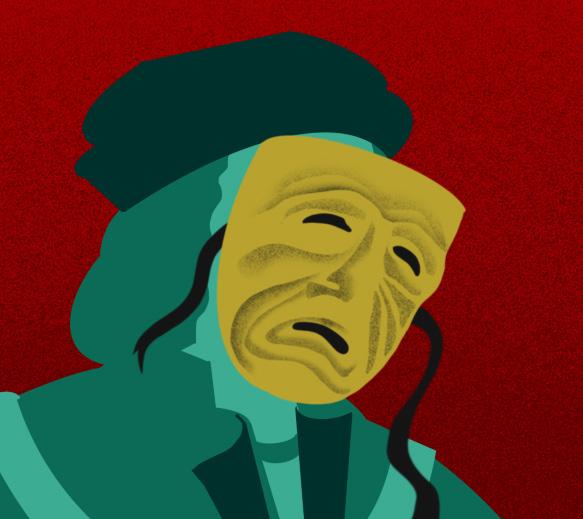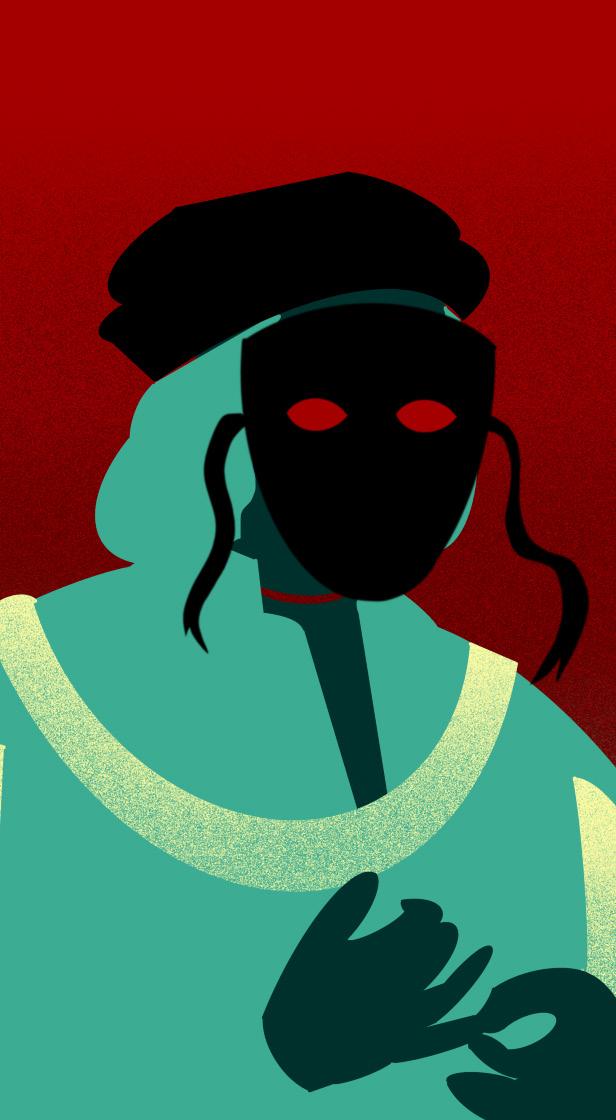
17 minute read
This House believes Richard III killed the Princes in the Tower
from Kronos MT20
FOR
BY LAURA DE LISLE
Advertisement
It’s tempting to believe in the version of Richard III that Jim Howick plays so well in the Horrible Histories song, purely because the evil monster of Shakespeare’s play is so prevalent in British culture. Surely Richard III can’t have been as bad as all that, we think, scoffing at Thomas More’s descriptions of a “malicious, wrathful, envious” little man. Surely this man didn’t kill his nephews to take the throne for himself. Unfortunately, sometimes myths are built around a kernel of truth, and Richard III murdering the Princes in the Tower is one such kernel, even if we tend to get the details wrong. Technically they weren’t both princes, which was the whole problem: Edward V, the son of Richard’s elder brother Edward IV, was already king of England, but at 12 years old, he was too young to rule under his own power. That meant a regency, with good old Uncle Richard as Lord Protector. So far, so good. Unfortunately, Edward V’s extended family on his mother Elizabeth’s side, the Woodvilles, weren’t big fans of Richard. He knew he would lose the immense amount of power he had built up as his brother’s premier magnate in the north when the young king was crowned, which the Woodvilles insisted should happen as soon as possible. The date of Edward V’s coronation was set for 22nd June 1483. 12 was unusually young for a king, but the Woodvilles were happy to rule through their scion until he reached maturity (and maybe even after that). Richard had to act fast. An obscure marriage contract between Edward IV and Lady Eleanor Butler was dug up, proving that Edward’s marriage to Elizabeth Woodville was bigamous, and their children therefore illegitimate. (A rumour even circulated that the late king himself had been illegitimate – easier to believe when you compare the 6’4” blond Edward IV with his 5’8” dark-haired father.) Who else could step up but Edward’s loyal younger brother, the last legitimate son of York? An assembly of lords and commoners declared Richard king on 25 June; he was hastily crowned on 6 July. But there were still those pesky kids to deal with. Richard III had a strong motive for ensuring that a tragic accident befell Edward V and his younger brother Richard, duke of York (they didn’t have babynames.com in the late Middle Ages). Richard claimed to have moved them into the Tower of London in August 1483 for their own protection, but they were never seen again. The concern that a potential rebellious faction
might attempt to break them out, or launch a coup in their name, must have weighed heavily on Richard’s mind. He had seen how mercy towards a deposed king could backfire – in 1471, Edward IV had been briefly overthrown by his former ally the earl of Warwick, who reinstalled the conveniently-still-alive Henry VI on the throne. If Edward had killed Henry when he’d become king back in 1461, he wouldn’t have been deposed, and he and Richard
wouldn’t have been forced to take refuge in Burgundy for six months. Edward IV retook the throne, of course, but Richard’s roll call of supporters was far shorter than his brother’s. Having his nephews murdered was the safest option. But then why didn’t he produce the boys’ corpses to dissuade rebellious nobles? Simply put, it wasn’t a good look, kicking your reign off with the murder of a 12 year old and a nine-year-old. They might have been inconvenient political obstacles, but they were still children. Richard’s main obsession was legitimacy, believe it or not – he presented himself as the continuity candidate, the king who would restore England to her former glory after thirty years of intermittent civil war. His followers stressed his resemblance to his father in contrast with his elder brother’s unusual appearance: here was a true son of York, a loyal soldier infinitely preferable to a Woodville puppet. Parading the boys’ bodies around London might have undermined

this image just the tiniest bit. Richard might not have made use of his nephews’ remains, but they would eventually resurface. In 1674, the skeletons of two children were found buried underneath a staircase in the Tower of London. They were proven to be related to each other, but unfortunately Charles II had them interred in Westminster Abbey before their identities could be determined, and both the Church of England and the Queen have refused all attempts to unearth them since. Come on, though. Two child-sized skeletons buried underneath the Tower of London, proved to be related to each other. It would be a staggering coincidence if they weren’t who we suspect they are. Of course, it is entirely possible that, as author Philippa Gregory postulates in her historical novel The White Queen, one or both of the boys was smuggled out of England and replaced by a hapless peasant child (fans of Game of Thrones will spot a similarity with Theon Greyjoy’s execution of two local boys dressed up as the youngest Stark heirs). Two notable pretenders, dubbed Lambert Simnel and Perkin Warbeck, caused trouble later on during Henry VII’s reign; we’ll never know for sure whether they were the lost sons of York. Nevertheless, whether the boys that were killed were Edward and Richard or not, Richard (and the rest of the world) believed they were, which is what counts. Just because he may have failed at murdering his nephews doesn’t mean that he didn’t try to. The big hole in either side of this argument is the lack of contemporary evidence. When Henry VII came to the throne in 1485, he didn’t look into what had happened to the boys. There’s an argument to be made that he didn’t want to investigate because it was likely that either Edward or Richard might still be alive and capable of challenging him for the throne – and therefore Richard couldn’t have killed them. However, just because Henry was anxious about the possibility doesn’t prove that the boys were alive. It was the Middle Ages, so you couldn’t just run a DNA test. That means nobody can say for certain what happened to the Princes (or rather, King and Prince) in the Tower – Richard was acquitted of
their murder in a televised mock trial in 1984 on those grounds. But the solution which seems most likely to be true is the simplest: Richard needed his nephews gone, so he had them killed. All this isn’t to say that Richard was the monster Shakespeare and the Tudors made him out to be. He hadn’t been plotting to take the throne for years – his actions in 1483 were prompted by circumstances unfolding around him, not by a mad lust for power. The great irony is that he was a much better magnate than he was a king, and he would have preferred to stay in the north, where he was known for good governance. But he couldn’t maintain his position in the north under a Woodville-dominated monarchy, so he was forced to choose between taking the throne and losing everything. He didn’t kill his eldest brother – Edward IV really did die of a cold, the only thing he caught on a fishing trip in April 1483 – nor his next-oldest brother, George, duke of Clarence. Clarence’s mental state had been going downhill for years by the time Edward executed him: in 1477, Clarence was convinced that his wife Isabel Neville had been poisoned by her lady-in-waiting, Ankarette Twynyho, so naturally he tried the woman for murder and executed her. He also plotted against his elder brother, as he had done during Warwick’s rebellion, but Richard wasn’t whispering in Edward’s ear that he should kill him, and he didn’t have Clarence drowned in a vat of wine. And he definitely didn’t propose to Anne Neville over the corpse of her first husband. Her death in March 1485, preceded by that of their only son, weakened Richard significantly. Even his supporters could see that Richard’s position on the throne, sans wife and heir, was more precarious than ever; this was one of the major reasons that he lost the Battle of Bosworth, as fewer nobles turned out to fight for him. Therefore, it would have made no sense for Richard to kill his wife – unlike his young nephews. A lot of what most people think they know about Richard III is Tudor propaganda. Henry VII, a man with a shaky claim to the throne who’d grown up mostly outside of England, had to disparage the previous king as much as possible. But the problems that the continued existence of two royal heirs posed to Richard’s position were simply too great for him to ignore, particularly with his intimate knowledge of what could go wrong if they were allowed to live out their days in the Tower. They were never seen again after August 1483 – or, at least, nobody who could prove that they were one of the boys was ever seen again. The lack of contemporary evidence means that the historical debate will keep on raging, but the fact remains that Edward V and Richard, duke of York, disappeared, and their uncle was the person with the strongest motive to kill them. Thus, the myth of Richard III as the arch-villain of the Wars of the Roses was built around that kernel of truth.
AGAINST
BY SAM HARPER
The true circumstances behind the disappearance of Edward V and his younger brother Richard in the summer of 1483 can never be known for sure. Nevertheless, the case that Richard did not kill the Princes in the Tower has never received the consideration it deserves. Most are unanimous in their verdict that Richard III ordered the murder of the Princes to cement his power. It seems the simplest explanation and as such is rarely questioned. Why is this the case? Modern perceptions of Richard are inescapably shaped by depictions which have virtually no grounding in the truth. Ask the average Brit to picture Richard III, and chances are they imagine a hunchbacked, hideous, monster of a man. Influenced by a school curriculum obsessed with the Tudors and their legacy, most see the Battle of Bosworth as the triumph of the fundamentally good Henry Tudor over the corrupt, power-hungry Richard. It seems reasonable to let such an interpretation reinforce its chilling conclusion: Richard murdering his young nephews in cold blood. Those with a more sympathetic view of the king are frequently mocked as “Ricardian loons” (coined by David Starkey), while the classic historical comedy series Blackadder features a benevolent Richard III as a ridiculous example of rewritten history. It is about time that Richard III got the fair trial that has too often been denied him. Therefore, before I argue for his innocence, it is vital to dispel any false preconceptions. Richard’s nefarious reputation today mostly stems from his depiction in Shakespeare’s eponymous play. Shakespeare’s Richard is a hunchback with a withered arm, born with a full set of teeth at birth and forever rendered inhuman, a “lump of foul deformity” (I:ii). Richard states in his opening soliloquy “I am determined to prove a villain” (I.i) and proceeds to murder the princes and confess to many more murders, of his brother George, Duke of Clarence, of Henry VI and his son Edward... the list goes on. And yet none of these accusations have any basis in fact. Given that Shakespeare wrote his tetralogy of history plays (Hen-
ry VI parts 1-3 and Richard III) in the 1590s, with Elizabeth I, the granddaughter of Henry Tudor, on the throne, it seems that it was in the Bard’s interest to depict Richard as the despicable foe to the noble founder of the House of Tudor. Indeed, Shakespeare’s anti-Richard connections run deeper. A prominent patron of his was Fernando Stanley, a direct descendant of Lord Thomas Stanley, Henry Tudor’s father-inlaw, who famously switched allegiance from Richard to Henry at Bosworth. As for Shakespeare’s sources, they were also tainted by Tudor bias; the basis for events in the play was Thomas More’s The History of King Richard III (c. 1516), written in the reign of Henry VIII and so very unlikely to sing Richard’s praises. Tudor sources appear to be the reproduction of rumours without any discernible evidence for their claims. Additionally, More’s account was meant to be more of a manual on moral guidance than a rigorous historical record, and as such relied on the Tudor rumour mill to turn conjecture into historical fact. A fairer assessment of Richard III’s character is difficult to come by in narrative sources, but the facts of his life dispel most of More and Shakespeare’s accusations. Richard served the princes’ father Edward IV loyally in the Wars of the Roses, was rewarded for his service with control of the Council of the North from 1472 onwards and was designated as Lord Protector before Edward’s death in 1483. Other murders attributed to Richard in Shakespeare’s play are pure fantasy - Edward of Westminster was killed at Tewkesbury in 1471, while Richard’s brother George was executed by Edward IV for treason in 1478. The recent discovery of Richard’s remains under a Leicester car park revealed scoliosis of the spine, but none of the other deformities Shakespeare so vigorously emphasised.

Such a history of slander, exaggeration and falsehood brings me to my central argument. Once the idea that the princes’ murder was consistent with Richard’s character has been debunked, there is no conclusive evidence that he sent them to their deaths, and the multiple alternatives available cast considerable doubt over the theory of their murder. Of course, it is indisputable that the princes were held in the Tower of London after being declared illegitimate in June 1483 and that they were never seen again after August. But automatically concluding their murder from the disappearance rests on three grounds: negative preconceptions about Richard III’s character (addressed above), Occam’s Razor - the idea that the simplest explanation is usually the correct one - and the advantages of murdering the princes which could serve as motive. Occam’s Razor appears convincing - the princes disappeared under Richard’s supervision, so he must have ordered their deaths. Rumours about the prince’s deaths circulated from 1484 right up to More’s recounting of them, but a closer look at the context of their disappearance and the actions of those close to them reveal circumstances that were far from simple. Elizabeth Woodville would surely have been concerned that two of her children had disappeared, and deeply suspicious of her brother-in-law. Why then did she send her three younger daughters into Richard’s care at his court in the spring of 1484? Further, as Matthew Lewis points out, why did Woodville keep one of Richard’s books in her personal collection, her name signed beneath his? These decisions are surely not those of a woman whose sons had been murdered. Most glaring of all, the princes’ mother never mentioned the supposed deaths of her sons before she died in 1492, even when in a position of relative power as the king’s mother-in-law. As Jack Leslau so succinctly puts it, “When a mother does not claim that her sons are dead or missing, we may reasonably conclude that her sons are neither dead nor missing”. Other elites of the time were similarly silent on the matter, even when it would have been beneficial to reveal their fate. Would Henry VII have had a decade-long diplomatic struggle with the famed pretender Perkin Warbeck if there hadn’t been considerable chances of their survival? In addition, Henry never acknowledged their murder and no masses were said in the princes’ names during his reign. If we apply Occam’s Razor beyond the isolated event that most would be familiar with, designating their
death as the simplest explanation simply does not hold up. Similarly, the case for Richard III securing his place on the English throne by killing the two individuals with superior claims collapses under scrutiny. Carrying out the boys’ murder in order to cement his position on the throne would only have made sense if Richard had revealed their bodies, with an alternative explanation for their demise. There existed precedent for this; previously deposed kings such as Edward II and Richard II had been imprisoned, and likely murdered, but had always had their bodies revealed with the possible murder covered up as having been natural causes. Even if Richard did murder the princes, covering it up as a disappearance only weakened rather than strengthened his position on the throne, with the controversy likely contributing to the rise in support for Henry Tudor up to the Battle of Bosworth. Despite the common assumption that Richard was able to cement his authority through the murders, ultimately A.J. Pollard argues “the belief that he had murdered his nephews seriously handicapped Richard’s efforts to secure himself on the throne he had usurped”. Additionally, the tainting of Henry VII’s reign by a succession of pretenders like Simnel and Warbeck is testament to the importance of confirming the death of one’s political rivals. Furthermore, if the murder of his rivals was part of Richard’s masterplan, then he made an absolute hash of it - all 17 of his other nieces and nephews were still alive at his death, including Elizabeth of York, whose marriage to Henry ultimately gave the Tudor line royal legitimacy. Therefore, I believe he did not have sufficient motive to murder the princes. The above criticism naturally leads to a new question: what was the Princes’ actual fate? The short answer is, of course, that we don’t know; the meagre evidence we have is invariably fraught with conjecture, caricature and lies about Richard which convince many of his guilt. I would argue that the burden of proof in this matter lies with the accuser, and I believe I have shown there can be reasonable doubt of Richard’s guilt. However, some of the alternative theories concerning the Princes deserve an explanation. Theories that Henry VII or the Duke of Buckingham were responsible seem to go too far, and into the realms of conspiracy theory; others are even more implausible suspects, as any access to the Tower during Richard’s reign would have had to involve his complicity. I think the most plausible theory, fitting best with the circumstantial evidence I have laid out above, is that they lived on in hiding under false identities, with the full knowledge of Richard, Elizabeth Woodville, and perhaps even Henry VII. Woodville’s lack of public outcry over the fate of her sons, coupled with her probable forced retirement to Bermondsey Abbey in 1487, suggests a collective agreement with Richard that her daughter and son-in-law wanted to keep secret for fear of Henry’s usurpation, leading to her exile to the abbey. Richard’s network of confidantes seemed wellplaced to facilitate the disappearance of the boys, with his sister the Duchess of Burgundy and the dozens of nobles in his northern heartlands well-placed to secrete two young boys. Further, there was a precedent for such actions; Henry IV sent the heir presumptive Edmund Mortimer and his younger brother into hiding following his 1399 coup until his death in 1413, meaning Richard had an existing model for how to deal with rival heirs that didn’t involve murder. Further speculation concerning the princes’ false identities has been dubious at best, with tangible evidence of their fate lacking. Nevertheless, Henry’s actions during the 1490s, his anxieties and the amount of money invested in countering Perkin Warbeck’s threat and overseas support suggests the pretender could have genuinely been Richard, Duke of York. Even if Warbeck was an imposter (which seems almost certain) Henry’s behaviour at the very least suggests the survival of the princes was possible. None of the alternative theories are supported by sufficient evidence for me to be wholly convinced of their truth. However, one simple question remains concerning the burden of proof in this matter: could you convict Richard of murder in a court of law? It is convenient to jump to a straightforward conclusion, a conclusion which fits with your perception of Richard as an evil, hideous despot. I by no means argue that Richard III was benevolent- merely that he was a man shaped by tumultuous times, who should be held suspect but not immediately condemned. With all the alternative explanations, the strange behaviours of those near to the princes, and the clear biases of pro-Tudor sources based on rumours and falsehoods, the only certainty is that there is insufficient evidence to conclude that Richard killed the Princes in the Tower. I therefore ask my reader to extend Richard an olive branch and refuse to condemn one of England’s most misunderstood kings.
Art by Fred Seddon











